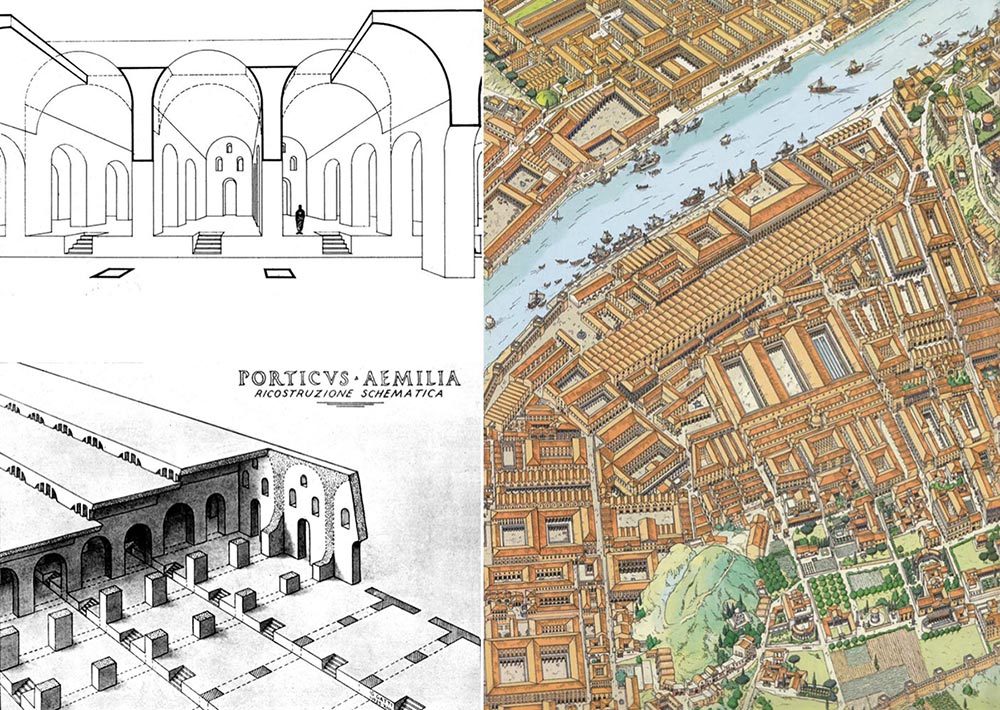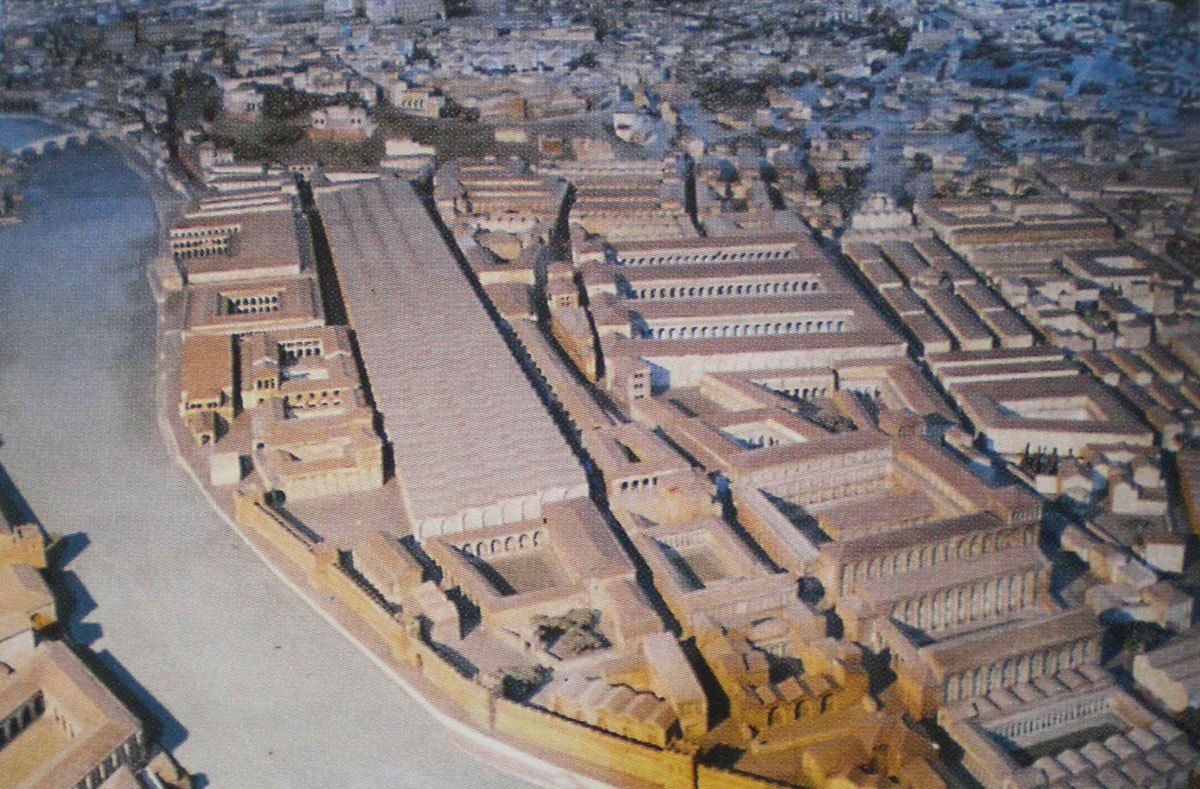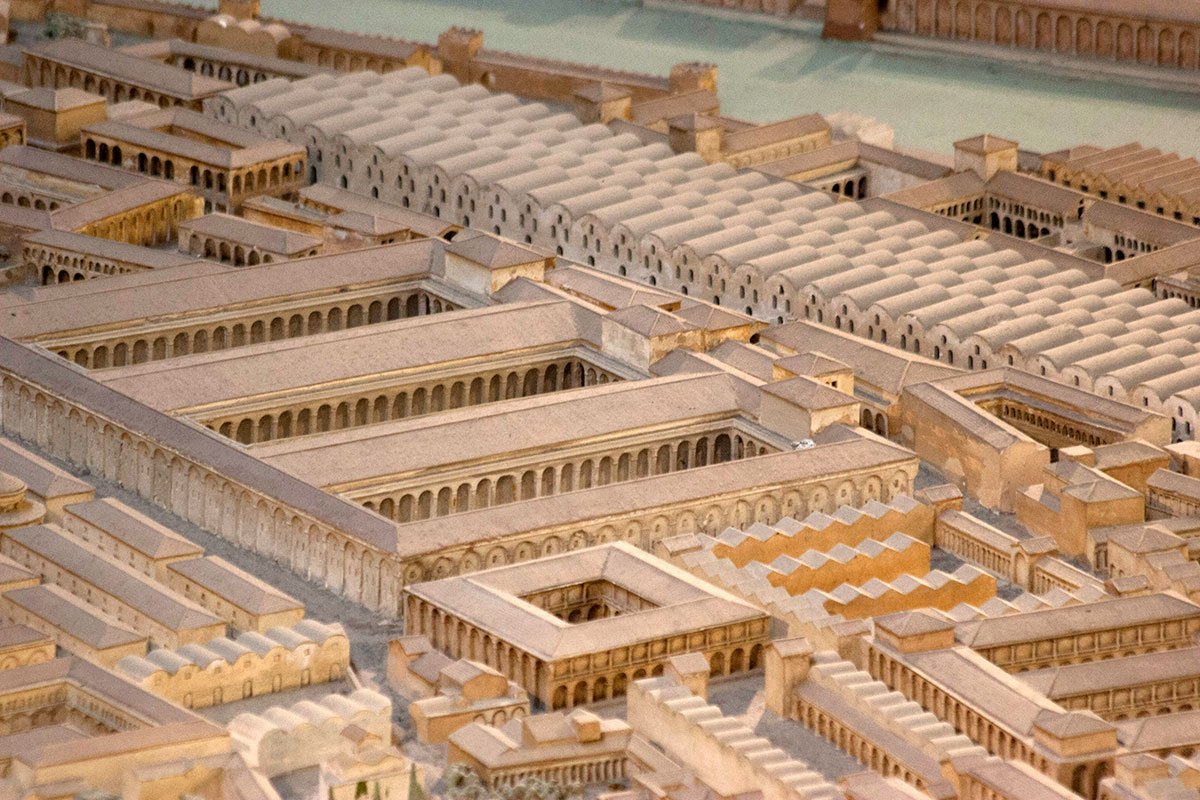- Large scale warehouses for goods imported to Rome
- This complex was the first large-scale use of concrete (Opus Caementicum: a mixture of stone rubble, liquid mortar composed of lime, sand and pozzolana, a volcanic substance) in a public building
- It was considered innovative Roman architecture as opposed to traditional architecture (followed the rectilinear principles of Etruscan and Classical Greek architectural style)
- Built in 199 BC by the aediles M Aemilius Lepidus and L Aemilius Paulus
Platner, SB. Platner’s Topography and Monuments of ancient Rome. Second Edition. Allyn and Bacon. Boston. Norwood Press JS Cushing Co.–Berwick and Smith Co. Norwood, Mass. 1904, 1911. Pages 87.
Kleiner DEE, Open Yale Courses Lecture 3—Technology and Revolution in Roman Architecture
Political and military implications
- As Rome expanded militarily so did her population as did the need for food; the porticus Aemilia was a monumental effort to address this need
- This project was the first instance of the use of concrete on a massive scale



